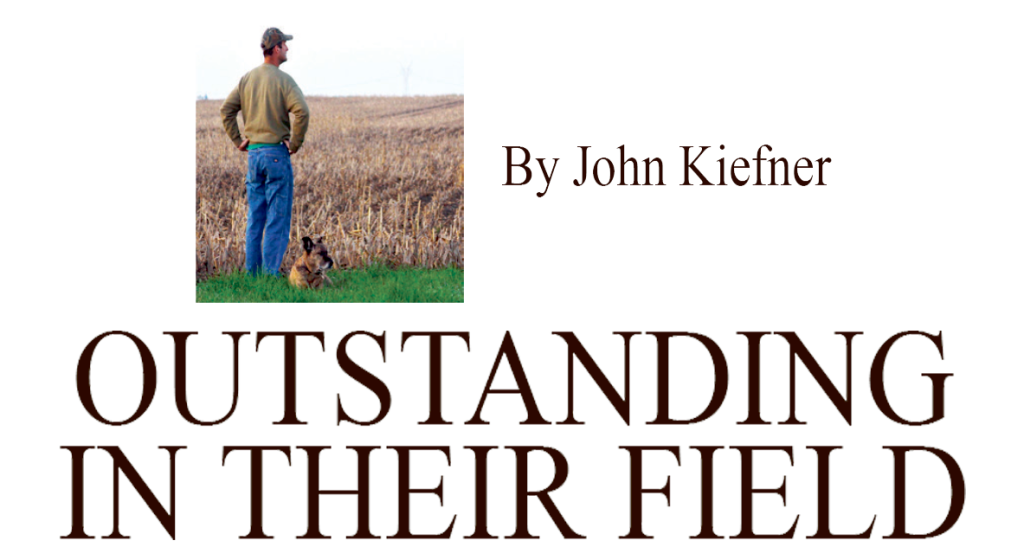Outstanding In their field

If you were to get a tattoo, what would it be?
When I was very young, I thought tattoos were a sign of being rebellious or purposely being different than societal norms. Now it seems if you do not have a tattoo, you are being different. How do tattoos fit in an article about farming?
I posted a video on Facebook of my combine harvesting 6 rows of corn through the middle of a tall sea of corn. My narration stated how tall and massive the plants were, 12’ tall and being perfectly erect. Eric commented, “Is this a genetically modified crop?” I will now paraphrase the answer I posted to that question:
Here is what I have witnessed in my lifetime: In the 1970s, my dad planted 21,000 corn seeds per acre. Weeds would steal moisture and nutrients from the crop and make harvest difficult. Insects like the corn borer tunneled into the stalk, and rootworms would feed on the corn plants’ roots underground. This injured the plants and cut yields. Winds could blow the plants with weak roots over, or snap a hollow and brittle stalk, causing more losses and headaches with harvest. 120 bushels per acre (BPA) was a great yield.
In the 1980s when I took over farming, we were planting 25,000 plants per acre. With the constant use of herbicides, we started winning the battle with weeds. Yields improved to 150 BPA or more, but rootworm and corn borer still caused much lodging of plants and yield losses. Insecticides were used repetitively with great cost and careful use to avoid accidental poisoning.
Then in the 1990s, corn that was genetically modified with the BT gene (Bacillus thuringiensis) came to fruition, giving corn plants resistance to many insects. Plants grew more robust and stood a much better chance of survival due to greatly improved health and vigor.
Risky insecticide applications in the field were virtually eliminated. Satellite technology with grid soil testing and variable rate fertilizer applications gave us better placement of all crop nutrients. And with a reduction in insect pests, the corn plants could reach for the stars and produce bigger yields.
The corn plant is a sunlight factory; the more leaves it has and robust the roots are for moisture absorption allows the plant to intercept as much sunlight as it can, and use photosynthesis to convert that energy into sugar to produce as many big ears as possible.
About 15 years ago, we were planting 32,000 seeds per acre and started applying fungicides late in the season to control fungal diseases. Yields started surpassing the 200 bushel-per acre mark.
Today many farmers plant 35,000 seeds or more per acre and aim for 250-bushel yields, or more. That is the evolution I have witnessed over the last 50 years to produce corn yields 7 times greater than my grandpa did back in the 1920’s.
After my comment, John stated, “That looks like a fun job.” Then Tony the tattoo man, (that is what I called Tony when he started buying hay from me years ago because he is a tattoo artist) commented, “I would trade a tattoo for a chance to drive the combine.”
When I married my wife, Cora, she said she wanted to get a tattoo of a special note I left her one day. Tony has given us the chance for a free tattoo. I suggested to Cora that maybe I could get a bale of hay tattooed on my bicep. She said she wanted it instead of me. I told her to get her own combine then, and give Tony the ride.
Guess who is getting the tattoo, and guess who is sleeping in the horse barn tonight.